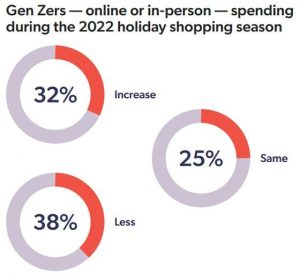— November 13, 2018
As any savvy business owner knows, your business is more than the sum of its parts. Yes, factors like profitability, inventory, and stock prices are a significant contributor to your business’s valuation, but they don’t fully represent its success. Less quantitative drivers of business value, like customer loyalty and brand recognition, are also important and can be the difference between selling your business at a break-even or a profitable price. Before deciding on a selling price, it’s important to understand the value of your business’s goodwill, and how to calculate that number.
What is Goodwill?
Chances are, your loyalty to a favorite sandwich shop or hair salon aren’t based entirely in the product or service itself. It’s likely that you keep coming back because you appreciate the customer service, their community involvement, the neighborly brand, or helpful employees. Factors like these make up a business’s goodwill, which is a catchall phrase that describes the intangible — yet highly valuable — factors that can add or subtract from a company’s value beyond their physical business assets. Business goodwill tells buyers how successful the business currently is, which goes a long way in determining how successful it will be if new ownership runs things exactly as they are. More often than not, goodwill is the reason a business is bought at higher than the market-determined asking price.
If your business has positive employee relations, high brand awareness in your area, and a high customer satisfaction rate, these are all achievements that should be accounted for in your valuation. Similarly, intellectual property and potential for profitable future expansion can be considered goodwill. But, because it’s difficult to quantify them, they’re not easy to accurately represent in your financial records, especially for smaller, private companies that are not monitored by the Securities and Exchange Commission (SEC).
It’s important to properly account for goodwill so that you can sell your business for what it’s actually worth.
Negative Goodwill
Goodwill, unfortunately, is a two-way street; a positive goodwill increases your business’s value but negative goodwill has the opposite effect. Unorganized processes, distressed profits, employee tension, low customer satisfaction, or a recent scandal can lower your business’s valuation below market asking price. To sell your business at its highest profitability, it’s important that your goodwill is strong to get the most from your hard work.
How To Determine Your Business’s Goodwill
Quantifying The Seemingly Unquantifiable
It may seem impossible to quantify these intangible parts of your business; however, there are a few simple ways of determining your goodwill.
The first way to determine your goodwill involves identifying the market value on all identifiable business assets. It will take some time, but the results you get will be accurate and therefore, less refutable by a buyer.
- First, estimate the fair market value of all identified business assets
- Determine a reasonable rate of return on the identified business assets
- Subtract the return from your total business earnings to determine your excess earnings
- Capitalize the excess earnings (using the correct capitalization rate) to determine your goodwill
The second way to determine goodwill involves business income and is much more simplified, but still helpful if you’re under a time crunch and have the information readily available.
- Calculate your business’s average profits from the last few years
- Estimate how many years into the future this number could stay consistent
- Multiply the average profit by the number of years to calculate your goodwill
This number will show a buyer their expected return-on-investment in the future and justify the higher-than-market price you’re asking.
Why It’s Important to Report Impairments
Since the 2001-2002 accounting scandals, where companies were purposefully estimating their goodwill far above its fair value, The Financial Accounting Standards Board requires that companies test their goodwill assets for “impairments” annually and record them, if necessary. Goodwill impairments occur when the fair value of goodwill dips below its expected value, due to anything from increased competition, regulatory action, or a deterioration in the capabilities of acquired assets to generate revenue. Not reporting impairments has cost companies like Macy’s and AOL billions of dollars. If needed, take the time to learn how to report impairments.
When selling your business, it’s important to understand what factors set your business above the average market value of a company in your industry. Take the time to understand what goodwill makes your company successful, and don’t push it aside when it comes time to set a price and negotiate with a buyer.
Business & Finance Articles on Business 2 Community
(117)
Report Post





